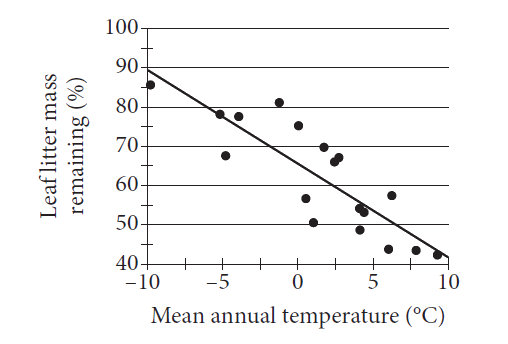Decomposition temperature of CaCO3(s) is approximately 900∘C. Which of the following decompose below 900∘C?
BeCO3,MgCO3
SrCO3,BaCO3
BeCO3,BaCO3
MgCO3,SrCO3
The correct Answer is:A
To determine which compounds decompose below the decomposition temperature of calcium carbonate (CaCO₃), which is approximately 900°C, we need to analyze the thermal stability of various compounds. The key points to consider are:
1. Understanding Decomposition: Calcium carbonate decomposes upon heating into calcium oxide (CaO) and carbon dioxide (CO₂). The stability of a compound can be inferred from its decomposition temperature.
2. Covalent vs Ionic Compounds: Covalent compounds tend to be less thermally stable than ionic compounds due to weaker bonds. Therefore, we need to identify covalent compounds among the options provided.
3. Group 2 Elements: The question hints at elements from Group 2 of the periodic table (alkaline earth metals). The thermal stability of their carbonates decreases as we move up the group. This means that beryllium and magnesium carbonates are less stable compared to calcium carbonate.
4. Fajans' Rule: According to Fajans' rule, smaller cations exhibit more covalent character. Therefore, beryllium (Be²⁺) and magnesium (Mg²⁺) are smaller than calcium (Ca²⁺) and will have a higher covalent character, making their carbonates less stable and likely to decompose at lower temperatures.
5. Comparing Sizes: Beryllium and magnesium ions are smaller than calcium ions. Thus, their carbonates (BeCO₃ and MgCO₃) are expected to decompose at temperatures below 900°C.
1. Identify the Decomposition Temperature of CaCO₃:
- CaCO₃ decomposes at approximately 900°C.
2. Consider the Group 2 Carbonates:
- The carbonates of beryllium (BeCO₃), magnesium (MgCO₃), calcium (CaCO₃), strontium (SrCO₃), and barium (BaCO₃) need to be evaluated.
3. Analyze the Stability:
- Beryllium and magnesium carbonates are expected to be less stable than calcium carbonate due to their smaller ionic sizes and higher covalent character.
4. Conclusion:
- Therefore, BeCO₃ and MgCO₃ are likely to decompose below 900°C.
5. Final Answer:
- The compounds that decompose below 900°C are Beryllium carbonate (BeCO₃) and Magnesium carbonate (MgCO₃).
- CaCO₃ decomposes at approximately 900°C.
- The carbonates of beryllium (BeCO₃), magnesium (MgCO₃), calcium (CaCO₃), strontium (SrCO₃), and barium (BaCO₃) need to be evaluated.
- Beryllium and magnesium carbonates are expected to be less stable than calcium carbonate due to their smaller ionic sizes and higher covalent character.
- Therefore, BeCO₃ and MgCO₃ are likely to decompose below 900°C.
- The compounds that decompose below 900°C are Beryllium carbonate (BeCO₃) and Magnesium carbonate (MgCO₃).
Similar Questions
Knowledge Check
Which of the following is not chemically CaCO3 ?
APrecipitated chalkBIceland sparCShells of sea animalsDAsbestos.Which of the following values of b satisfies the equation 4,500=900b?
A0.2B5C90D405A cookie store's weekly profit is a function of the number of cookies , c, that it sells . The equation approximating the weekly profit , in dollars , is
f( c)=0.60c-900
Which of the following is a false statement about the weekly profits ?AThe store needs to sell 1,500 cookies per week to break even (i.e., make neither a profit nor a less).BIf the store sells no cookies in a week , it will lose $900.CIf the equation for weekly profit was f(c )=0.40c-900, the store would need to sell fewer cookies than for the original equation in order to break even.Dif the equation for weekly profit is f(c ) =0.60c-800 , the store would need to sell fewer cookies than for the original equation in order to break even.
Following reaction is occuring in a lime kiln: CaCO3(s)⇔CaO(s)+CO2(g). Which of the following will result in increase in the production of lime?
View SolutionThe biome in which the mean annual temperature is approximately between 20∘Cand25∘C and the mean annual precipitation is approximately between 150 cm to 450 cm is
View SolutionFor the reaction, CaCO3(s)→CaO(s)+CO2(g), which is the correct representation?
View SolutionThe figure below shows the relationship between the percent of leaf litter mass remaining after decomposing for 3 years and the mean annual temperature, in degrees Celsius (.∘C), in 18 forests in Canada. A line of best fit is also shown.

A particular forest in Canada, whose data is not included in the figure, had a mean annual temperature of −2∘C. Based on the line of best fit, which of the following is closest to the predicted percent of leaf litter mass remaining in this particular forest after decomposing for 3 years?
View SolutionFor a reaction,
CaCO3(s)→CaO(s)+CO2(g)
ΔfH∘(CaO)=−631.1 kJ mol−1
ΔfH∘(CO2)=−393.5 kJ mol−1and
ΔfH∘(CaCO3)=−1206.9 kJ mol−1
Which of the following is a correct statement? (A) A large amount of heat is evolved during the decomposition of C a C O 3 . (B)Decomposition of C a C O 3 is an endothermic process and heat is provided for decomposition (C) The amount of heat evolved cannot be calculated from the data provided . (D) Δ f H ∘ = Σ Δ f H ∘ (reactants) − Σ Δ f H ∘ (products)
View Solution
